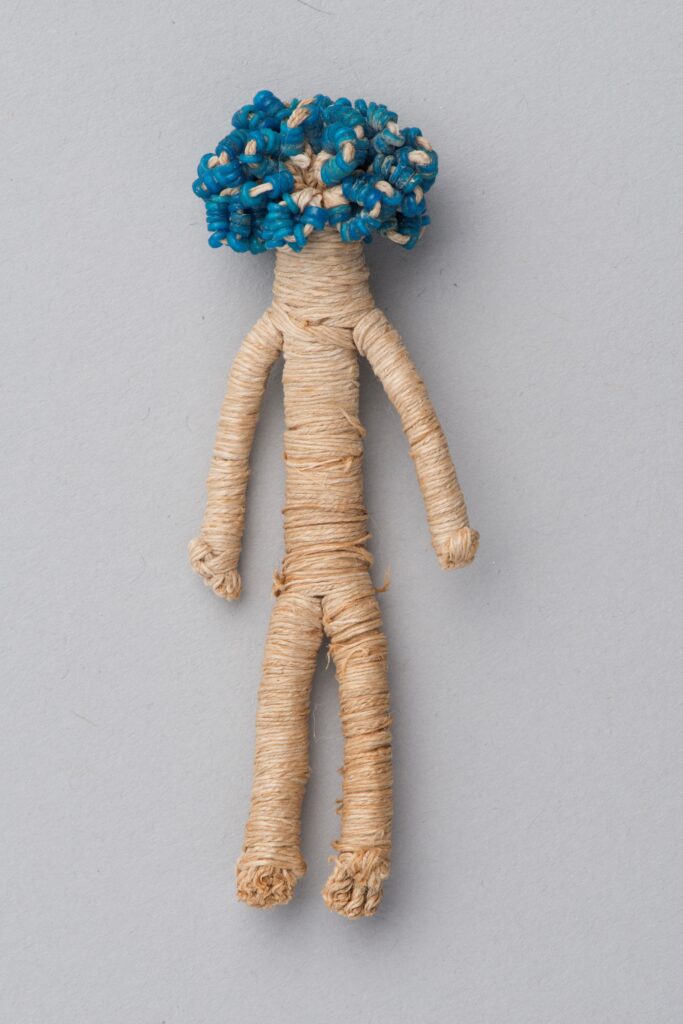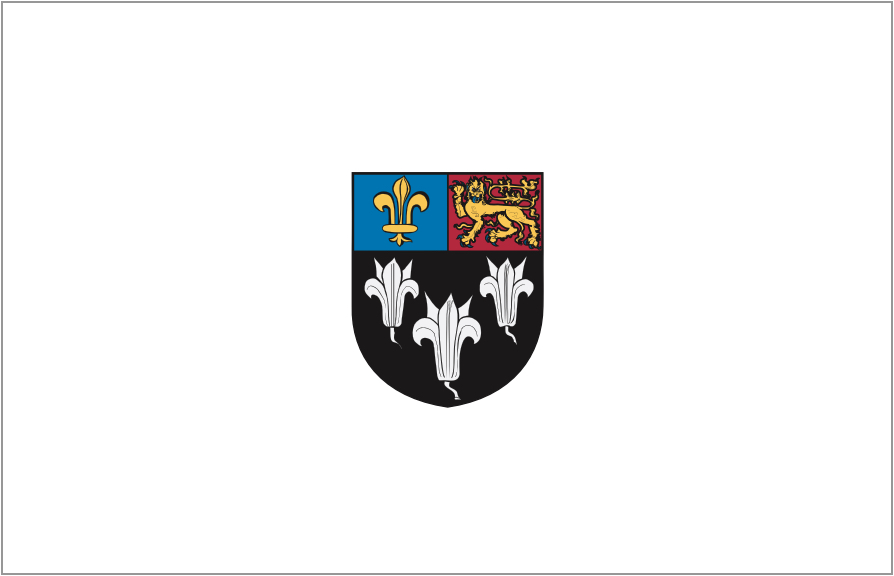The ibis was one manifestation of Thoth, the god associated with divine knowledge and writing.

(ECM.1692-2010)
The breed of ibis specifically sacred to Thoth is the African sacred ibis (Threskiornis aethiopicus) which became extinct in Egypt in the mid-19th century. This species has a white body, here represented by travertine, and a black head, wing tips, and tail. This figure is probably missing a piece from the tail, which would have been a dark color.
The ostrich feather is a symbol of the goddess Ma’at, the deified personification of truth and order. The god Thoth, in his role as a judge, often has connections to the concept of ma’at (truth and order). In the Hall of Judgment in the Egyptian underworld, Thoth weighed the deceased’s heart against a ma’at feather in order to judge how he/she lived on earth.
Thoth was known for his judging capabilities in other myths as well; even the gods themselves would seek his divine advice. This figure could also refer to Thoth as the retriever of the Eye of Ra, often considered to be personified by Ma’at. It may therefore be a reference to Thoth’s searching for Ma’at in the papyrus marshes.
The suspension loop behind the neck of the bird suggests this figure would have had an amuletic function. However, its solid flat base, which connects the feet of the bird and the standing feather, also meant the piece could stand upright. This tiny ibis has an almost identical companion on display in the Museum of Antiquities (ECM.1691-2010), which also strides and holds a ma’at feather.

More Information on the ibis and other Ancient Egyptian artefacts from the Myers Collection (Museum of Antiquities) can be found in the online exhibition Ancient Beings – Exploring over 3,000 of Ancient Egyptian culture through 32 objects (ancient-beings.com).

By Leah Rashid, Gallery Steward
Referenced from:
Selections from the Eton College Myers Collection, The Johns Hopkins Archaeological Museum. Meg Swaney and Morgan Moroney (Eds), 2016



